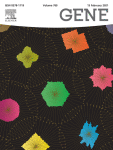View Item
- xmlui.general.dspace_homeCentros e Institutos de InvestigaciónCIAP. Centro de Investigaciones AgropecuariasInstituto de Patología VegetalArtículos científicosxmlui.ArtifactBrowser.ItemViewer.trail
- DSpace Home
- Centros e Institutos de Investigación
- CIAP. Centro de Investigaciones Agropecuarias
- Instituto de Patología Vegetal
- Artículos científicos
- View Item
A glimpse into the DNA virome of the unique “living fossil” Welwitschia mirabilis
Abstract
Here, we report the identification and characterization of four novel DNA viruses from Welwitschia mirabilis
transcriptomic and genomic datasets. Complete circular virus-like sequences with affinity to members of the
Caulimoviridae and Geminiviridae families were detected and characterized from Welwitschia mirabilis genomic
data. The two newly members of the Caulimoviridae family have been tentatively named as Welwitschia mirabilis
virus 1 and 2
[ver mas...]
Here, we report the identification and characterization of four novel DNA viruses from Welwitschia mirabilis
transcriptomic and genomic datasets. Complete circular virus-like sequences with affinity to members of the
Caulimoviridae and Geminiviridae families were detected and characterized from Welwitschia mirabilis genomic
data. The two newly members of the Caulimoviridae family have been tentatively named as Welwitschia mirabilis
virus 1 and 2 (WMV1-WMV2); whereas the two identified geminiviruses were named as Welwitschia mirabilis
associated geminivirus A and B (WMaGVA-WMaGVB). Phylogenetic analysis suggests that WMV1-2 belong to a
proposed genus of Caulimoviridae-infecting gymnosperms. WMaGVA-B are phylogenetically related with both
mastreviruses and capulaviruses and likely represent a distinct evolutionary lineage within geminiviruses.
Additionally, we detected several endogenous virus-like elements (EVE) linked to the discovered viruses in the
recently reported W. mirabilis genome, suggesting a shared ancient evolutionary history of these viruses and the
Welwithschia.
[Cerrar]

Fuente
Gene 843 : 146806 (November 2022)
Date
2022-08-10
Editorial
Elsevier
ISSN
0378-1119
Formato
pdf
Tipo de documento
artículo
Palabras Claves
Derechos de acceso
Restringido
 Excepto donde se diga explicitamente, este item se publica bajo la siguiente descripción: Creative Commons Attribution-NonCommercial-ShareAlike 2.5 Unported (CC BY-NC-SA 2.5)
Excepto donde se diga explicitamente, este item se publica bajo la siguiente descripción: Creative Commons Attribution-NonCommercial-ShareAlike 2.5 Unported (CC BY-NC-SA 2.5)

